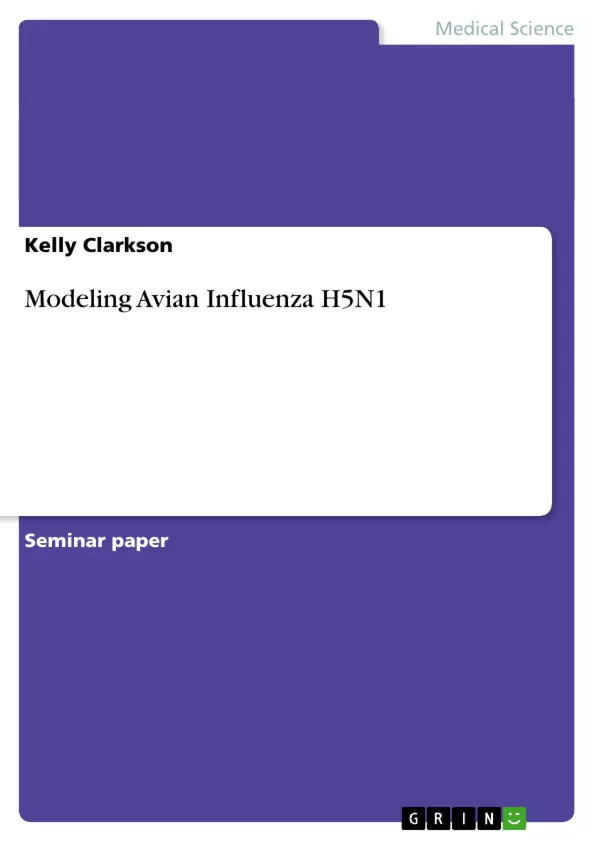In the recent past, bird flu has claimed many lives. These are mainly of those, belonging to humans and animals of whose food chain, birds and fowls tend to be a part. This, has in turn affected other animals, as well as upset the entire food chain. The virus has an RNA based protein (Tiensin, Thanawat, 2011), which is the cause of the problem. There are many subtypes of the virus, however only four of them have been found to be the real cause of the problems. These strains are named as the H5N1, H7N3, H7N7 and H9N2. This virus has genes, which are more adaptive towards aerial beings such as birds. However, this does not mean that the virus cannot pass on the pathogen to other beings but are relieve less likely to result in death. The World Health Organization mentions in its report that, there have been just two deaths due to Avian Flu in the countries of Egypt and Indonesia in a time span of 5th November 2012 and 17th November, 2012(World Health Organization, 2012). Both the deaths have been attributed to exposure to chicken or ducks in the backyard or in the neighborhood. In this report, we attempt to find an appropriate model so that the problem can be nipped in the bud. The report, will seek to determine the implementation and the results of various implementations in order to perfect the model. Apart from the cases reported, the avian flu has seriously hit the poultry market, with government taking no chances and introducing bans on the import and export of chicken and fowl as well as products made out of them. All the infected birds have been tested in order to eliminate chances of wrong deaths. The affected ones are out to death including their young ones and the unhatched eggs. In the fig 1.1, the table mentions the cumulative number of cases as well as deaths attributed to Avian Influenza. The table mentions data collected since 2003, the year when the flu virus first made an appearance till 2012, in order to show case the necessity for the generation of the perfect model.
Inhaltsverzeichnis (Table of Contents)
- Improve SIR-Model with Virus H5N1
- Introduction – Avian Influenza and Model Problem
- Interventions
- Social Isolation
- Dynamic Vaccination
Zielsetzung und Themenschwerpunkte (Objectives and Key Themes)
This text focuses on modeling avian influenza H5N1 and using a modified SIR model to predict the spread of the virus. The primary objective is to develop a model that can accurately predict the virus's lifecycle and identify potential intervention strategies. The text examines the effectiveness of different interventions, including social isolation and dynamic vaccination, in controlling the spread of the disease.- Modeling Avian Influenza H5N1
- SIR Model Modification for H5N1
- Interventions for Disease Control
- Social Isolation as a Control Strategy
- Dynamic Vaccination in Avian Flu
Zusammenfassung der Kapitel (Chapter Summaries)
Improve SIR-Model with Virus H5N1
This chapter introduces the problem of avian influenza H5N1 and the need for an effective model to predict its spread. The chapter discusses the virus's characteristics, its impact on humans and animals, and the challenges associated with controlling its transmission. It also presents a table showing the cumulative number of cases and deaths attributed to avian influenza from 2003 to 2012.Introduction – Avian Influenza and Model Problem
This section provides a more detailed overview of avian influenza, including its subtypes, the virus's RNA-based protein structure, and its impact on the poultry market. It highlights the importance of modeling the virus's lifecycle to develop effective prevention and control strategies.Interventions
This section explores various interventions aimed at controlling the spread of avian influenza. It discusses the effectiveness of clinical isolation, vaccination, and the administration of Tamiflu. The chapter emphasizes the importance of testing and isolating susceptible birds to prevent further infection.Social Isolation
This subsection focuses on social isolation as a control strategy for avian influenza. It describes how limiting social interactions can significantly impede the spread of the disease. The section highlights the effectiveness of social isolation in reducing transmission rates, especially when implemented early on.Dynamic Vaccination
This subsection examines the role of dynamic vaccination in combating avian flu. The text acknowledges that vaccination is primarily used for birds, but it also discusses recent developments in human avian flu vaccines. The section emphasizes the limited availability of vaccines and its role as a secondary measure for preventing infection among humans.Schlüsselwörter (Keywords)
The text primarily focuses on avian influenza, specifically the H5N1 subtype. It utilizes an SIR model to analyze the spread of the virus, considering interventions such as social isolation and dynamic vaccination. The text also explores the impact of the disease on human and animal health, highlighting the importance of effective control strategies to mitigate the risks associated with avian influenza.- Citar trabajo
- Dr Kelly Clarkson (Autor), 2012, Modeling Avian Influenza H5N1, Múnich, GRIN Verlag, https://www.grin.com/document/213224



